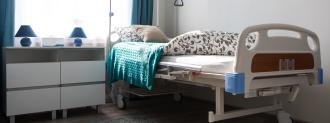As nursing homes have become hot spots for COVID-19 fatalities, a pressing question has been thrown into lethal sharpness by the pandemic: what alternatives to nursing homes do we have?
Nursing homes and assisted living facilities have accounted for between 40 to 45% of COVID-19 deaths in the U.S., a substantial share of a substantial number. Filled with high-risk people and necessitating close contact for care, SARS-CoV-2 can be particularly deadly if it infiltrates the facilities.
As the U.S. grays, the search for alternatives to nursing homes takes on new urgency as the country fails to contain COVID-19.
Possible Alternatives to Nursing Homes: Flats, Families, and Roommates
According to a report in Axios, one trend gaining momentum is the “granny flat.” Built above garages, in backyards, and in basements, these in-home apartments allow seniors to live semi-independently near their families.
Interest has surged, Axios reports, in part because they are the easiest alternative to nursing homes to build, even finding municipal support in places like Austin.
Multigenerational households — where elders and their children and grandchildren and other family members live under one roof — are also gaining in popularity, although the risks of such living situations during the pandemic are real. (It’s not clear how the risks of one compare to the other, at present.)
Another possibility (apparently less popular than other alternatives to nursing homes) is co-living; having seniors room together in a single home can help offset the cost of living, loneliness, and allow people to stay in their homes longer. New apps like Nesterly and SilverNest try to help tech-savvy seniors (or their kids) find potential roommates, which could help make this option more feasible.
“It’s logical to conclude that with extended periods of isolation that interest could increase,” Danielle Arigoni, the director of AARP Livable Communities, told Axios. “But on the flip side, it may be that people are more afraid of having a roommate right now.”
Abolish the Institutions
On the more radical end of the spectrum are advocates fighting for deinstitutionalization of care for seniors (and people with disabilities) across the board.
Research has indicated the particular vulnerability of nursing homes to vicious viral predators like influenza and norovirus, and some advocates believe the problem has only worsened as large companies snap up and consolidate nursing home providers, Undark reports.
While disability advocates seem more into the idea of moving completely to community care, those concerned about senior citizens tend to lean towards the reform camp.
What COVID-19 has made clear, however, is that alternatives to nursing homes will be a prominent problem in an aging world.
We’d love to hear from you! If you have a comment about this article or if you have a tip for a future Freethink story, please email us at [email protected]






